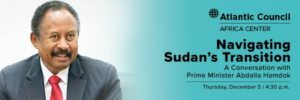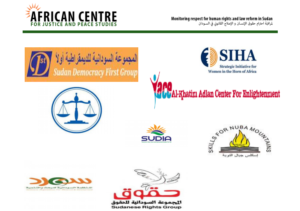 A U.N. humanitarian agency said Tuesday that tribal clashes between Arabs and non-Arabs in Sudan’s West Darfur province have displaced about 40,000 people, with thousands crossing to neighboring Chad, Associated Press reports (HT:FDD).
A U.N. humanitarian agency said Tuesday that tribal clashes between Arabs and non-Arabs in Sudan’s West Darfur province have displaced about 40,000 people, with thousands crossing to neighboring Chad, Associated Press reports (HT:FDD).
After decades of dictatorship, Sudan’s unlikely transition to democracy may finally be happening. How did the battle-scarred country reach this point, and what might derail the delicate transition? asks Ashley Quarcoo, an international development practitioner and visiting scholar at the Carnegie Endowment for International Peace.
History tells us that Sudan faces an uphill battle toward democracy. Between 1946 and 2010, more than three-quarters of the world’s toppled autocratic regimes ended up in another form of autocracy. Less than a quarter successfully moved toward democracy, she writes:
Looking at the more recent global wave of citizen protests in autocracies and democracies alike, many nondemocratic governments have pulled off a balancing act, agreeing to a few reforms that let the air out of the protests and allow the regime to survive. We have yet to see whether the reform efforts in Sudan will be enough to calm the waters, and whether the military will ultimately accept civilian rule.
 Much is at stake, but there is reason to be optimistic. One reason is the recent rapprochement with the United States, signaled by the first exchange of ambassadors in nearly a quarter of a century. Pressure is also building for the United States to remove Sudan from its State Sponsors of Terrorism list. This would shake off the country’s pariah status and allow desperately needed loans and foreign investment to trickle in, boosting the economy and showing the Sudanese people the benefits of a transition to democratic rule.
Much is at stake, but there is reason to be optimistic. One reason is the recent rapprochement with the United States, signaled by the first exchange of ambassadors in nearly a quarter of a century. Pressure is also building for the United States to remove Sudan from its State Sponsors of Terrorism list. This would shake off the country’s pariah status and allow desperately needed loans and foreign investment to trickle in, boosting the economy and showing the Sudanese people the benefits of a transition to democratic rule.
Civil society groups (above), including several partners of the National Endowment for Democracy, were closely involved in negotiating a peaceful transition.







